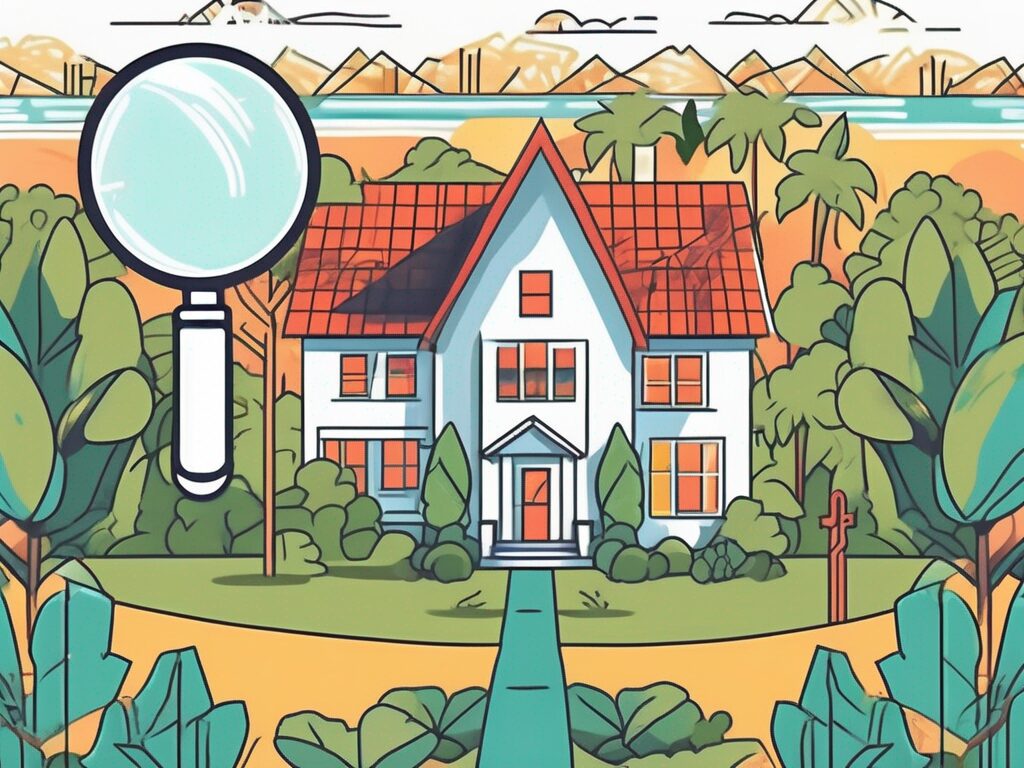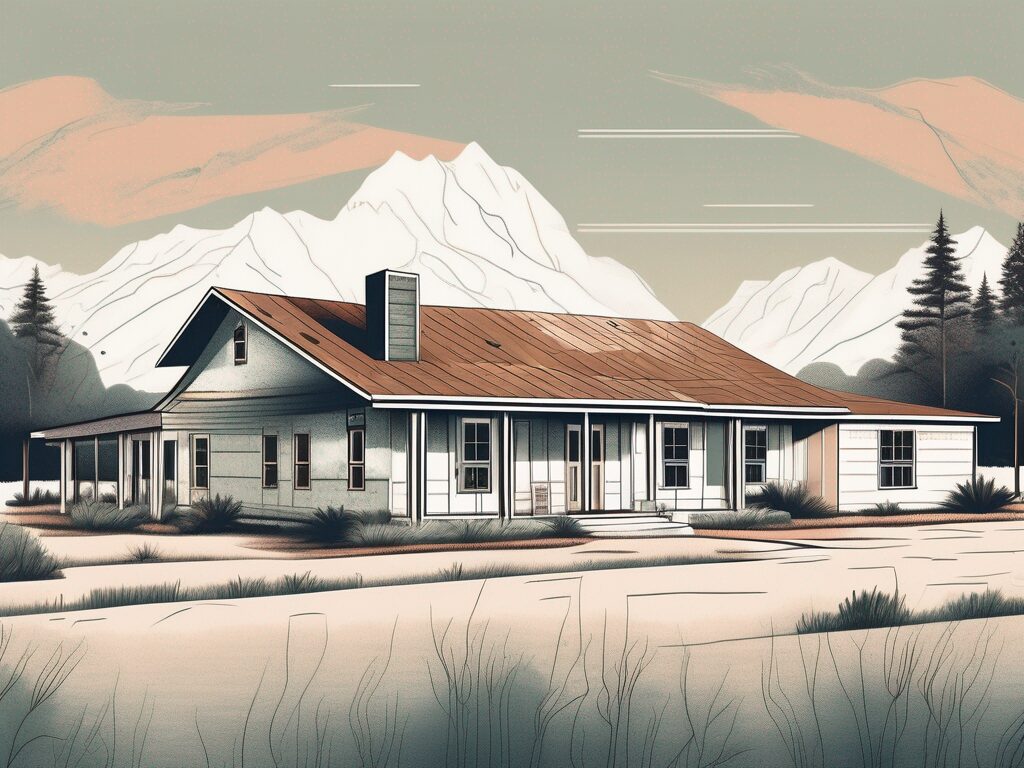
Agent A-Team or Solo Superhero? Finding the Right Real Estate Partner for Your Selling Journey in Wildwood Florida
When it comes to selling your home in Wildwood, Florida,…
January 29, 2024
The ranch house, an iconic staple of American architecture, has evolved and adapted throughout history to meet the changing needs and preferences of homeowners. From its humble origins to its resurgence in popularity, ranch houses continue to capture the hearts of those seeking a comfortable and practical home. In this article, we will delve into the rich history and evolution of ranch houses, explore the different types of ranch homes, and discuss the pros and cons of living in this unique style of residence.
The story of ranch houses begins with their origins, which can be traced back to the mid-20th century. These homes were heavily influenced by the designs of Western ranches and were initially built as modest dwellings for ranchers and their families.
However, the history of ranch houses goes beyond their humble beginnings. Let’s delve deeper into the fascinating evolution of these iconic American homes.
The concept of the ranch house can be credited to architect Cliff May, who in the 1930s sought to create a comfortable and accessible home for the average American family. May’s vision was characterized by a single-story layout, low-pitched roofs, and an open floor plan that seamlessly blended indoor and outdoor living spaces.
May’s innovative approach to home design was a breath of fresh air in an era dominated by multi-story houses with intricate architectural details. By promoting simplicity and functionality, May revolutionized the way homes were designed. The ranch house quickly gained popularity across the United States, becoming synonymous with the American dream.
As the popularity of ranch houses grew, architects and builders began to put their own spin on the style. Regional variations emerged, incorporating elements from different architectural traditions. In the Southwest, for example, ranch houses often featured adobe walls and Spanish-inspired details, while in the Midwest, they embraced a more traditional farmhouse aesthetic.
Despite their initial success, ranch houses began to decline in popularity during the late 20th century. The shift towards larger, multi-story homes with elaborate architectural details caused ranch houses to fall out of favor.
Additionally, changing demographics and societal trends led to a decrease in demand for the traditional ranch house. Many homeowners desired larger homes with more bedrooms and bathrooms, which ranch houses often lacked. The rise of suburban developments and the allure of cookie-cutter McMansions further contributed to the decline of ranch houses.
However, it’s important to note that not all ranch houses fell into obscurity. Some were lovingly preserved and maintained by homeowners who appreciated their unique charm and historical significance. These well-preserved ranch houses serve as a reminder of a bygone era and continue to captivate architecture enthusiasts.
In recent years, however, ranch houses have experienced a resurgence in popularity. Their practicality, timeless design, and affordability have captured the attention of homebuyers and architects alike.
Furthermore, the desire for single-story living and the need for accessible homes for retirees and individuals with mobility challenges have contributed to the renewed interest in ranch houses. The open floor plans and lack of stairs make ranch houses an ideal choice for those seeking a more convenient and comfortable living space.
Architects and designers have also embraced the ranch house style, incorporating modern updates and innovative features while staying true to the original design principles. This fusion of old and new has breathed new life into ranch houses, making them a sought-after option for homeowners looking for a blend of nostalgia and contemporary living.
Whether you’re drawn to the historical significance, the practicality, or the architectural charm, ranch houses continue to leave an indelible mark on the American housing landscape. Their evolution from modest dwellings to architectural icons is a testament to the enduring appeal of these beloved homes.
Ranch houses come in various styles, each with its own unique characteristics and appeal. Let’s take a closer look at some of the most popular types of ranch homes:
The California Ranch style combines the simplicity of traditional ranch houses with the influences of Spanish and Mediterranean architecture. These homes often feature stucco exteriors, low-pitched roofs, and large windows to embrace the scenic views.
One of the defining features of California Ranch homes is their seamless integration with the natural surroundings. The open floor plan and expansive windows allow for plenty of natural light, creating a bright and airy atmosphere. The use of stucco exteriors not only adds to the aesthetic appeal but also provides insulation, keeping the interior cool during hot summer months.
Additionally, California Ranch homes often have spacious outdoor living areas, such as patios or decks, where homeowners can enjoy the pleasant weather and beautiful landscapes. These outdoor spaces are perfect for hosting gatherings or simply relaxing and taking in the breathtaking views.
Suburban ranch homes are known for their spacious layouts and family-friendly design. These homes often boast large kitchens, multiple bedrooms, and ample storage space. They are frequently found in suburban neighborhoods, offering a balance between comfort and convenience.
One of the advantages of suburban ranch homes is the abundance of space they provide. The large kitchens are perfect for those who love to cook and entertain, while the multiple bedrooms offer plenty of room for a growing family. The ample storage space ensures that homeowners can keep their belongings organized and easily accessible.
Moreover, suburban ranch homes often feature well-maintained yards and landscaping, creating a welcoming and visually appealing exterior. The neighborhoods where these homes are located often have amenities such as parks, community centers, and schools, making them ideal for families.
The split-level ranch combines the single-story layout of a traditional ranch house with the addition of a half-level or basement. This design allows for distinct living areas and provides a sense of separation while maintaining the open feel characteristic of ranch houses.
One of the benefits of a split-level ranch is the added privacy it offers. The half-level or basement can be used as a separate living space, providing a designated area for activities such as a home office, a playroom, or a guest suite. This separation of living areas allows for a more organized and functional home.
Furthermore, the split-level design adds visual interest and architectural appeal to the exterior of the home. The different levels create depth and dimension, making the house stand out in the neighborhood. The additional space also provides opportunities for creative landscaping and outdoor living areas.
Raised ranch homes, also known as bi-level ranches, feature an entryway that leads to both upper and lower levels. The lower level is often used as a spacious family room or additional living area. Raised ranches offer flexibility and ample space for growing families.
One of the advantages of raised ranch homes is the separation of living spaces. The upper level typically houses the bedrooms and main living areas, providing privacy and quietness. The lower level, on the other hand, can be used as a family room, a home theater, or even a home gym, offering a versatile space for various activities.
Additionally, raised ranch homes often have an attached garage, providing convenient access to the house and extra storage space. The elevated entryway adds an architectural element to the exterior and creates a grand entrance for visitors.
Storybook ranch homes exude charm and nostalgia with their unique architectural details and whimsical design elements. These homes often feature decorative woodwork, gables, and inviting front porches, creating a warm and welcoming atmosphere.
One of the defining characteristics of storybook ranch homes is their attention to detail. The decorative woodwork, such as intricate trim and carved accents, adds a touch of elegance and craftsmanship. The gables, often adorned with charming windows or dormers, create a picturesque and fairy-tale-like appearance.
Moreover, the inviting front porches of storybook ranch homes provide a cozy outdoor space where homeowners can relax and enjoy the neighborhood. These porches are often adorned with hanging baskets, rocking chairs, or porch swings, adding to the overall charm and character of the home.
Inside, storybook ranch homes often feature cozy nooks, built-in bookshelves, and unique architectural elements such as arched doorways or exposed beams. These details add to the overall charm and create a sense of warmth and comfort.
While ranch houses offer numerous benefits, it is essential to consider both the advantages and drawbacks before making a decision:
One of the main advantages of ranch houses is the convenience of single-story living. With all essential living spaces on one floor, residents can enjoy easy accessibility and enhanced mobility. This layout is especially favorable for individuals with physical limitations or those planning to age in place.
Imagine waking up in the morning and not having to navigate any stairs to get to the kitchen for your first cup of coffee. In a ranch home, everything you need is just a few steps away. Whether you’re carrying laundry, groceries, or simply moving from one room to another, the absence of stairs makes your daily activities effortless and efficient.
Furthermore, the absence of stairs not only enhances mobility but also reduces the risk of accidents and injuries. For families with young children or elderly relatives, the single-story layout provides a safe and secure environment for everyone.
Ranch houses often have fewer structural complexities and maintenance requirements compared to multi-story homes. This translates into lower maintenance costs and reduced time spent on upkeep, offering homeowners peace of mind and additional savings.
Think about the time and money you can save by not having to worry about climbing ladders to clean gutters or paint the exterior walls. With a ranch home, you can focus on enjoying your free time rather than constantly maintaining your property.
Additionally, the reduced maintenance needs of a ranch home allow homeowners to allocate their resources towards other aspects of their lives. Whether it’s investing in hobbies, traveling, or saving for the future, the lower costs associated with a ranch home provide financial flexibility and freedom.
Due to their simple and adaptable design, ranch houses lend themselves well to remodeling and customization. Homeowners can easily make modifications to accommodate their changing needs or update the aesthetics to reflect their personal style.
Imagine the excitement of transforming your ranch home into a space that truly reflects your personality and lifestyle. Whether you want to create an open-concept living area, add a home office, or expand the kitchen, the possibilities for remodeling a ranch home are endless.
Furthermore, the adaptability of ranch houses allows homeowners to future-proof their homes. As your needs change over time, you can easily modify your ranch home to accommodate new family members, create separate living spaces, or incorporate energy-efficient features.
The open floor plan and seamless flow between indoor and outdoor spaces make ranch houses ideal for entertaining. Whether hosting family gatherings or social events, these homes provide ample space for guests to move freely and enjoy their time together.
Imagine hosting a summer barbecue in your backyard, with guests seamlessly transitioning between the kitchen, living room, and outdoor patio. The open layout of a ranch home allows for effortless socializing and creates a warm and inviting atmosphere for your guests.
Furthermore, the spaciousness of ranch homes allows for creative entertainment options. Whether you want to set up a home theater, create a game room, or design a dedicated space for hobbies, a ranch home provides the flexibility to bring your entertainment dreams to life.
Ranch houses offer flexibility in terms of layout and functionality. With minimal interior walls, homeowners have the freedom to create dynamic spaces that suit their lifestyle. Whether it’s combining rooms to create an expansive living area or dividing spaces to create separate zones, the possibilities are endless.
Imagine having the ability to transform your ranch home into a space that perfectly aligns with your needs and preferences. Whether you want to create a cozy reading nook, a home gym, or a dedicated workspace, the open layout of a ranch home allows you to design your ideal living environment.
Furthermore, the flexibility of ranch house layouts extends beyond the interior. With spacious yards and outdoor areas, homeowners can create outdoor living spaces that seamlessly blend with the interior of the home. From tranquil gardens to inviting patios, the transition from indoor to outdoor living is effortless in a ranch home.
As we’ve explored the history, evolution, and various types of ranch houses, one thing becomes clear – these homes have stood the test of time and continue to be a beloved choice for homeowners. Whether you’re captivated by the charm of a storybook ranch or drawn to the functionality of a suburban ranch, ranch houses embody the essence of what it means to call a place home.
So, if you’re searching for a house that seamlessly blends comfort, functionality, and style, perhaps a ranch house is the perfect fit for you. Step into the world of ranch houses and experience the enduring allure of the iconic American home.

If you want the Richr team to help you save thousands on your home just book a call.
 Book a call
Book a call